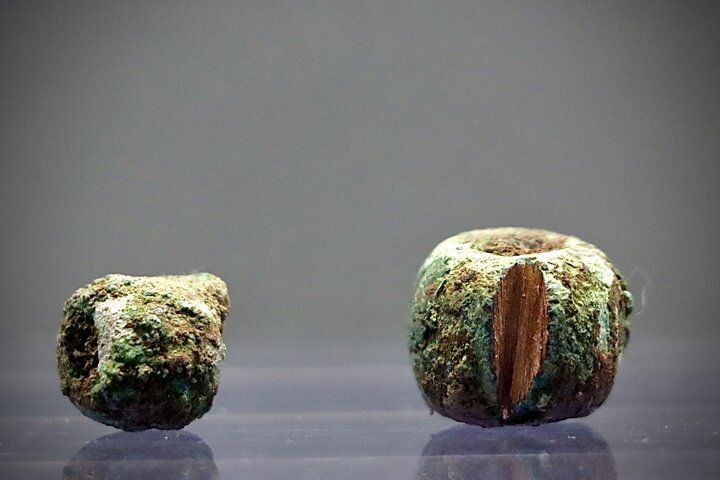9,000-year-old copperware excavated from Tepe Chaman to go on public view

TEHRAN - Newly excavated prehistoric items from Tepe Chaman will be showcased at the Azarbaijan Museum in Tabriz.
These findings are expected to significantly impact the understanding of Neolithic human settlement and metallurgy in the village of Leylan and its surrounding lands situated in East Azarbaijan province, CHTN reported on Wednesday.
According to organizers, the exhibit is intended to mark Iran’s Cultural Heritage Week and International Museum Day.
The recently discovered copper artifacts, dating back 9,000 years, push the timeline for copper usage in Iran further back than previously thought.
Archaeologists unearthed these copper plates mostly from graves, providing historical evidence of early human habitation in the area. Alongside these, stone and plaster jewelry, ancient tools, and pottery from the Neolithic period were also discovered, the report added.
The copper plates and other artifacts will be on display to the public starting Saturday, May 18, coinciding with International Museum Day, offering a rare glimpse into the early use of metal by humans in Iran.
Glimpses of coppersmithing in ancient Iran
When studying the history of copper use, it is best to divide it into the Chalcolithic or Copper Age, and the Bronze Age, among other eras. Copper is thought by some anthropologists to have been the first metal used by humans because of its softness and simplicity of manipulation.
During the 5th and 4th millennia BC in Iran, craftspeople were able to create enough heat to reach temperatures required for the melting of most of the then-known raw materials, and thus extract metals.
On top of that, copper-smelting techniques became well-known in various parts of Iran in this period. With the advancement of the knowledge of metallurgy in the Achaemenid era, finely crafted copper and bronze objects were created, continuing through ancient times.
Although copper is mentioned in geographical texts much less often than precious metals, it appears to have been mined over wide areas of Persia in early Islamic times.
AM
Leave a Comment